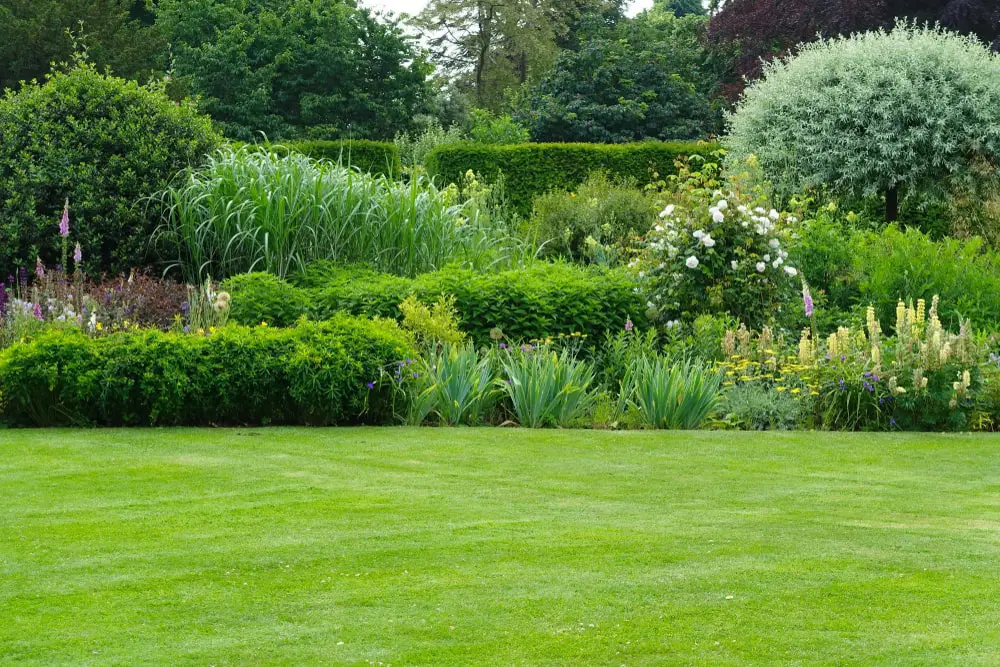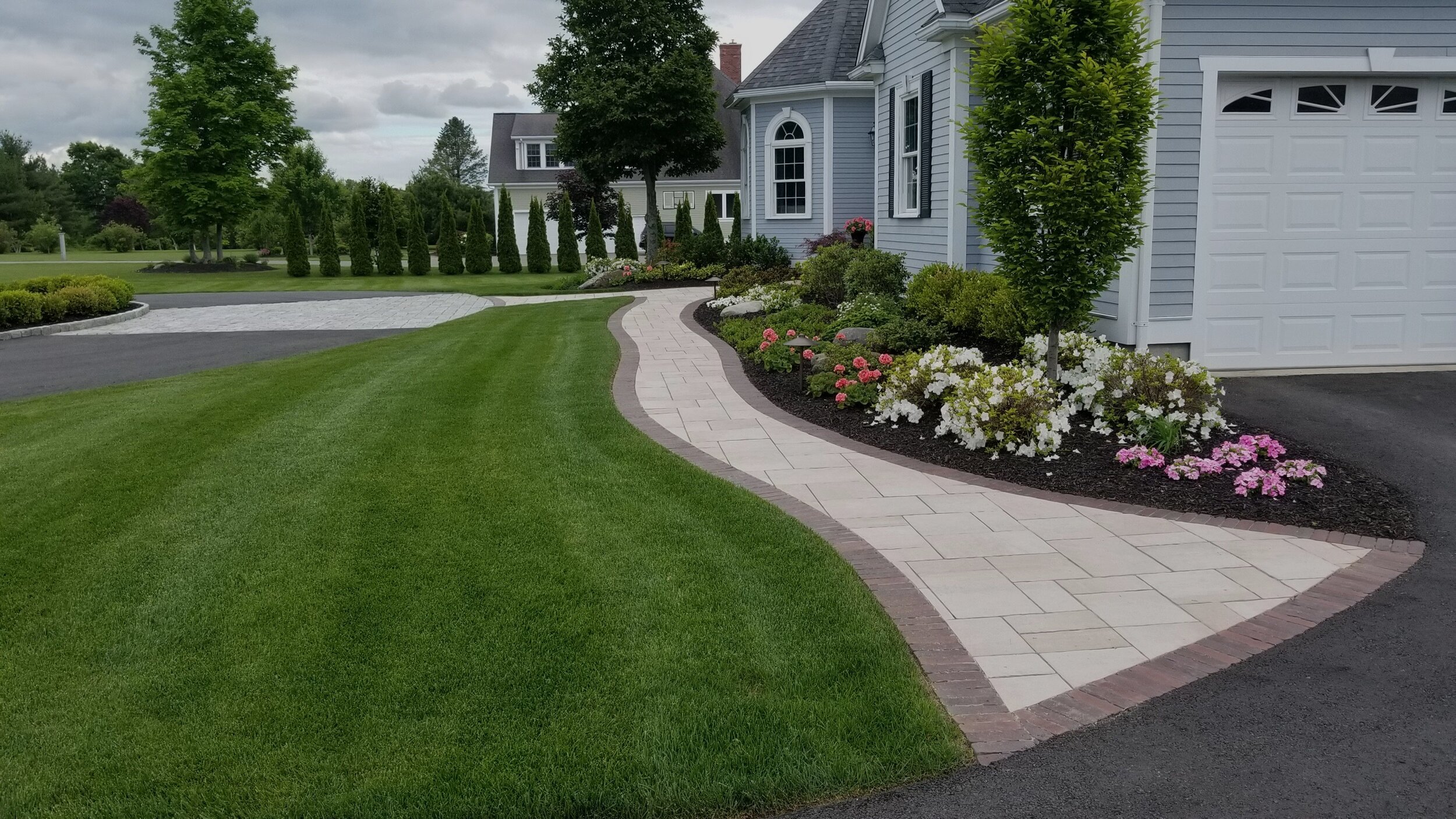Discover the Benefits of Sustainable Palm Desert Landscaping Techniques
Wiki Article
A Comprehensive Guide to Creating and Implementing Effective Landscaping Solutions
The art and science of landscaping expand beyond plain aesthetic appeals; they involve a thoughtful assimilation of style principles, environmental stewardship, and functional implementation. What methods can one employ to make sure these landscapes not only thrive yet also prosper in harmony with their environments?
Understanding Landscape Layout Concepts
One may wonder what fundamental aspects contribute to effective landscape layout. At its core, effective landscape style rests on numerous crucial principles that direct the arrangement and option of aspects within a space. These principles consist of unity, equilibrium, proportion, and rhythm, each offering to develop an unified exterior atmosphere.Unity describes the cohesive connection among numerous elements, making sure that they work with each other cosmetically and functionally. Equilibrium can be accomplished through asymmetrical or balanced plans, allowing the landscape to really feel stable and welcoming. Proportion involves comprehending the scale of components in regard to each various other and the surrounding environment, advertising visual consistency and convenience.

Evaluating Your Outdoor Room
Before carrying out the concepts of landscape design, a detailed assessment of your outside room is vital. This initial examination aids specify the scope of your landscaping job and makes certain that your layout aligns with the distinct attributes of your home. Begin by examining the measurements of your room, taking precise measurements to comprehend the offered location for numerous components such as pathways, patios, and gardens.Following, observe the existing features of your landscape, consisting of topography, dirt top quality, and drainage patterns. These factors substantially affect plant option and positioning. In addition, analyze the sunshine direct exposure across different areas throughout the day, as this will affect the types of plants that flourish in your garden.
Take into consideration the microclimates developed by frameworks, trees, and various other challenges, as they can affect temperature and dampness degrees. Take note of any type of existing plants or hardscape aspects that you wish to preserve or get rid of. This extensive assessment prepares for a reliable and knowledgeable landscape design remedy, ensuring that your style is not only cosmetically pleasing yet likewise practical and sustainable for years ahead.
Lasting Landscape Design Techniques
These techniques not only advertise eco-friendly balance however additionally enhance the functional and aesthetic worth of a landscape. Implementing effective watering systems, such as drip irrigation, lessens water waste and ensures that plants get appropriate dampness (Palm Desert Landscaping).
One more reliable strategy is the calculated positioning of bushes and trees to provide natural windbreaks and color, hence lowering energy prices (Palm Desert Landscaping). Rainfall gardens can be integrated right into the landscape layout to manage stormwater overflow properly, filtering pollutants before they go into rivers
Picking the Right Plants
Selecting the right plants for your landscape is vital to attaining both visual appeal and environmental harmony. The procedure starts with an understanding of your neighborhood climate, soil conditions, and the certain microenvironments within your landscape. Analyzing variables such as sunlight exposure, wetness degrees, and existing vegetations will certainly aid you choose plants that thrive in your special setup.Take into consideration including indigenous plants, as they are well-adapted to neighborhood problems, call for much less upkeep, and assistance local wildlife. Additionally, selecting a diverse array of species can enhance biodiversity while reducing the risk of disease This Site and pest outbreaks. It is vital to assess the growth practices, blooming periods, and seasonal colors of prospective plants to develop a vibrant and natural landscape.
Moreover, believe regarding the intended usage of the room; for example, if the area will experience high foot website traffic, go with durable ground covers. By thoughtfully choosing plants that straighten with both your visual goals and environmental demands, you can produce a sustainable landscape that not just boosts your residential or commercial property but additionally adds favorably to the surrounding community.

Implementation and Upkeep Strategies
When the appropriate plants have been selected for your landscape, the emphasis shifts to efficient execution and ongoing upkeep strategies. Successful installment begins with appropriate website prep work, that includes soil screening to identify nutrient degrees and pH, followed by changing the dirt as needed. Meticulously organize plants according to their development behaviors and light requirements, making sure adequate spacing to promote healthy and balanced growth.Watering is a critical aspect of execution. Develop a watering timetable that considers the particular requirements of each plant varieties, adjusting for seasonal changes. Using drip irrigation systems can boost water performance and reduce runoff.
Maintenance techniques need to be implemented to guarantee the durability and vigor of your landscape. Normal tasks include weeding, mulching, and trimming to regulate growth and protect against disease. Fertilization must be performed based on soil tests, offering the required nutrients without over-fertilizing.
Keeping an eye on for parasites and diseases is important; early detection can stop considerable damages. Seasonal changes to maintenance regimens, such as preparing and winterizing perennials for spring growth, will ensure that your landscape continues to be healthy and visually appealing year-round.
Final Thought
Effective execution and ongoing maintenance additionally make certain the longevity and vitality of landscapes. By incorporating these elements, landscapes can be transformed into lovely, useful environments that promote biodiversity and contribute positively to neighborhood health.
One might wonder what foundational aspects add to effective landscape design. At its core, successful landscape style pivots on several crucial concepts that lead the plan and choice of aspects within a room.Picking the right plants for your landscape is crucial to achieving both aesthetic allure and eco-friendly harmony. It is check here important to assess the growth habits, flowering periods, and seasonal shades of possible plants my review here to develop a natural and vibrant landscape.
When the best plants have been chosen for your landscape, the emphasis changes to reliable execution and recurring upkeep methods.
Report this wiki page